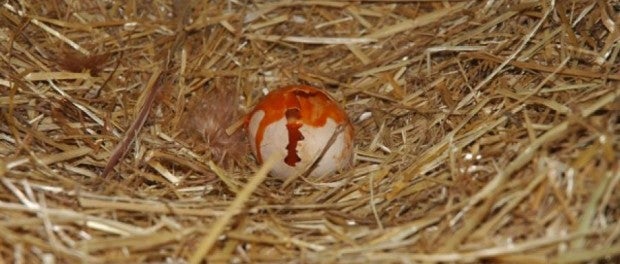Retraining an Egg Eating Chicken

One of the most delicious rewards farming has to offer is fresh eggs to eat every day. As you step out to the chicken coop each day in eager anticipation of your own breakfast, the last thing you want to see is that someone got there first. Though there are many predators more than willing to dine on eggs, the most upsetting scene is a chicken beating everyone else to the punch.
Strange though it may sound, chickens have been known to eat their own eggs. Much like us, once a chicken figures out how tasty an egg is, they may be unwilling to give up their delicious breakfast. This is a huge problem for farmers due to the loss is creates and the possible spread of this unwanted behavior.
What to do about an egg eater chicken is a toss-up depending on who you ask. Some immediately call for the stew pot, culling all birds that eat their own eggs. Others put in the time and effort to rehab and retrain them, sometimes with great success. The decision as to how to handle an egg eater is up to the individual farmer, but the good news is that there are options.
First and foremost, the egg eating culprit or culprits will need to be identified so you can know which bird needs to be re-directed towards more productive pursuits. A telltale sign of an egg eater is yolk on the beak or feathers. The guilty party may also be observed lingering around laying boxes in hopes of scoring a meal. If you’re uncertain as to which bird is responsible, set out some eggs as bait and watch to see who goes for them.
Next you need to determine why eggs are being eaten. One possible cause is that there is a deficiency in their diet somewhere for which they are compensating. Another reason could be traced back to boredom and curiosity. There could also be accidental breakage that a hen has discovered and upon tasting it decided to keep up the habit.
The next step in the process is to redirect the attention of egg eaters. There are several ways to do this and many farmers have had great success in trying them. Here are some examples:
1. Punch holes in each end of an egg with a tack and drain the contents, then fill the egg with mustard. Cover the holes on the ends so the mustard will stay put (wax is ideal for this purpose) and place the egg back in the nest. Since mustard is unappealing to egg eaters, a few of these unpleasant surprises may be enough to deter future efforts.
2. If accidental breakage is determined to be the cause, a re-evaluation of nesting boxes to allow more space and bedding could be necessary and may alleviate the problem. Stress during laying may also need to be minimized so that worried fidgeting doesn’t break eggs for egg eaters to dine on.
3. Take care of nutritional voids by offering layer feed and a separate source of calcium (oyster shells, crushed egg shells). Ideally a balance diet will make additional egg snacks less appealing.
4. Add curtains to nesting boxes. This will keep nesting hens calmer and will in theory decrease temptation to eat eggs because they cannot see the temptation.
5. Use decoy eggs such as golf balls. If a hen in search of an egg finds a golf ball a few times, the theory is that she will soon give up.
6. Start using nesting boxes with an incline that allows eggs to roll down and away from anyone looking for a snack.
Eradicating egg eating behaviors can be a lengthy process that requires a full commitment. In many cases, culling is the go-to solution because it is quick and effective, but depending on how much you want to retain your birds, attempting to fix it could prove worthwhile. Just keep in mind that during the process, broody hens with viable eggs should be moved so that no embryos are not lost to birds attempting to eat eggs. Hopefully some temporary, minor changes to your routine will be all it takes to get eggs back in your breakfast where they belong so that you, and your now former egg eater, can live happily ever after.








 Your Privacy Choices
Your Privacy Choices
Leave a comment